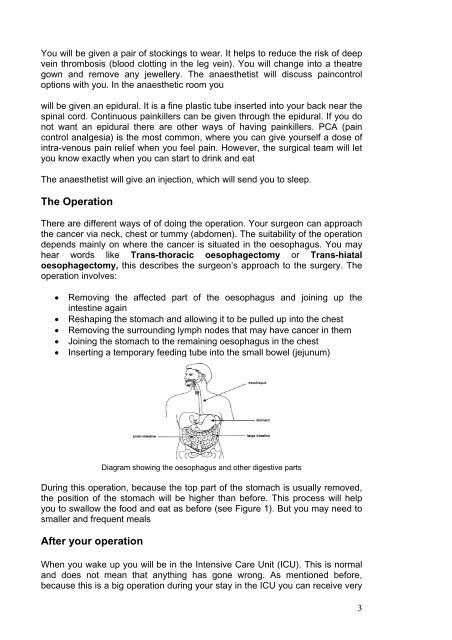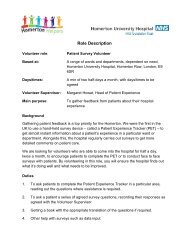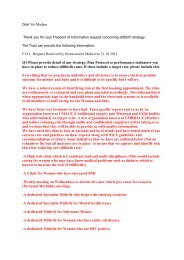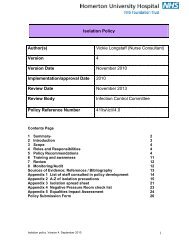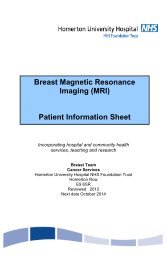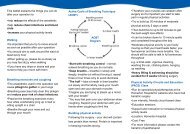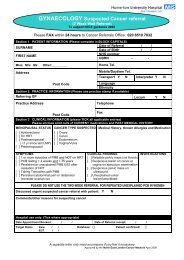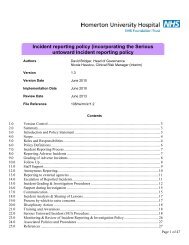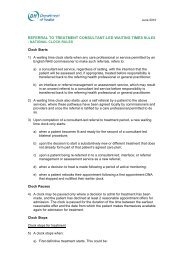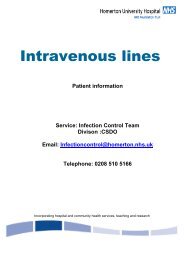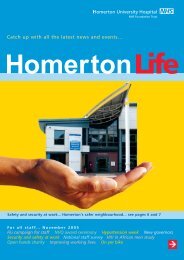Oesophagectomy leaflet - Homerton University Hospital
Oesophagectomy leaflet - Homerton University Hospital
Oesophagectomy leaflet - Homerton University Hospital
Create successful ePaper yourself
Turn your PDF publications into a flip-book with our unique Google optimized e-Paper software.
You will be given a pair of stockings to wear. It helps to reduce the risk of deepvein thrombosis (blood clotting in the leg vein). You will change into a theatregown and remove any jewellery. The anaesthetist will discuss paincontroloptions with you. In the anaesthetic room youwill be given an epidural. It is a fine plastic tube inserted into your back near thespinal cord. Continuous painkillers can be given through the epidural. If you donot want an epidural there are other ways of having painkillers. PCA (paincontrol analgesia) is the most common, where you can give yourself a dose ofintra-venous pain relief when you feel pain. However, the surgical team will letyou know exactly when you can start to drink and eatThe anaesthetist will give an injection, which will send you to sleep.The OperationThere are different ways of of doing the operation. Your surgeon can approachthe cancer via neck, chest or tummy (abdomen). The suitability of the operationdepends mainly on where the cancer is situated in the oesophagus. You mayhear words like Trans-thoracic oesophagectomy or Trans-hiataloesophagectomy, this describes the surgeon’s approach to the surgery. Theoperation involves:• Removing the affected part of the oesophagus and joining up theintestine again• Reshaping the stomach and allowing it to be pulled up into the chest• Removing the surrounding lymph nodes that may have cancer in them• Joining the stomach to the remaining oesophagus in the chest• Inserting a temporary feeding tube into the small bowel (jejunum)Diagram showing the oesophagus and other digestive partsDuring this operation, because the top part of the stomach is usually removed,the position of the stomach will be higher than before. This process will helpyou to swallow the food and eat as before (see Figure 1). But you may need tosmaller and frequent mealsAfter your operationWhen you wake up you will be in the Intensive Care Unit (ICU). This is normaland does not mean that anything has gone wrong. As mentioned before,because this is a big operation during your stay in the ICU you can receive very3


